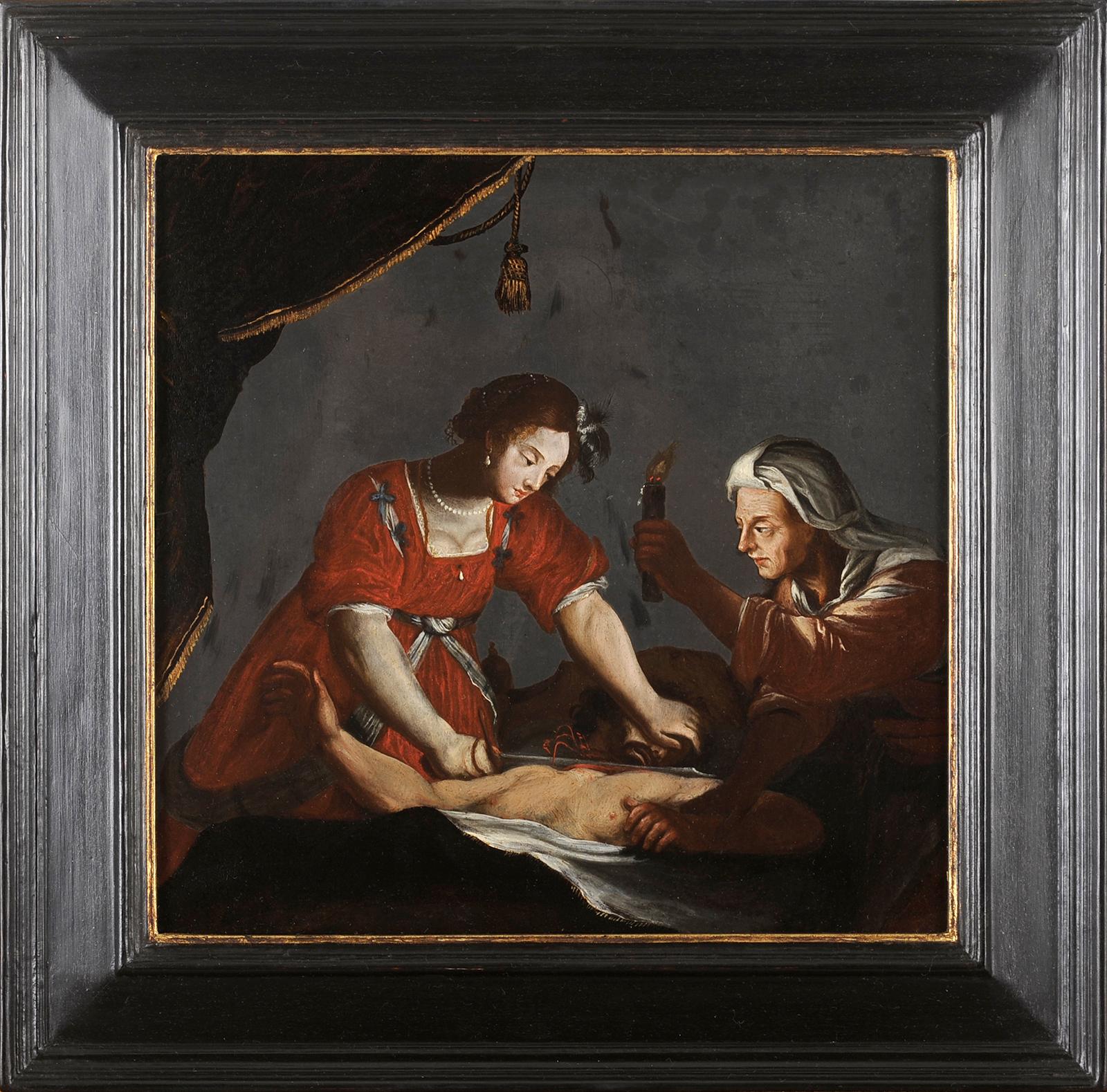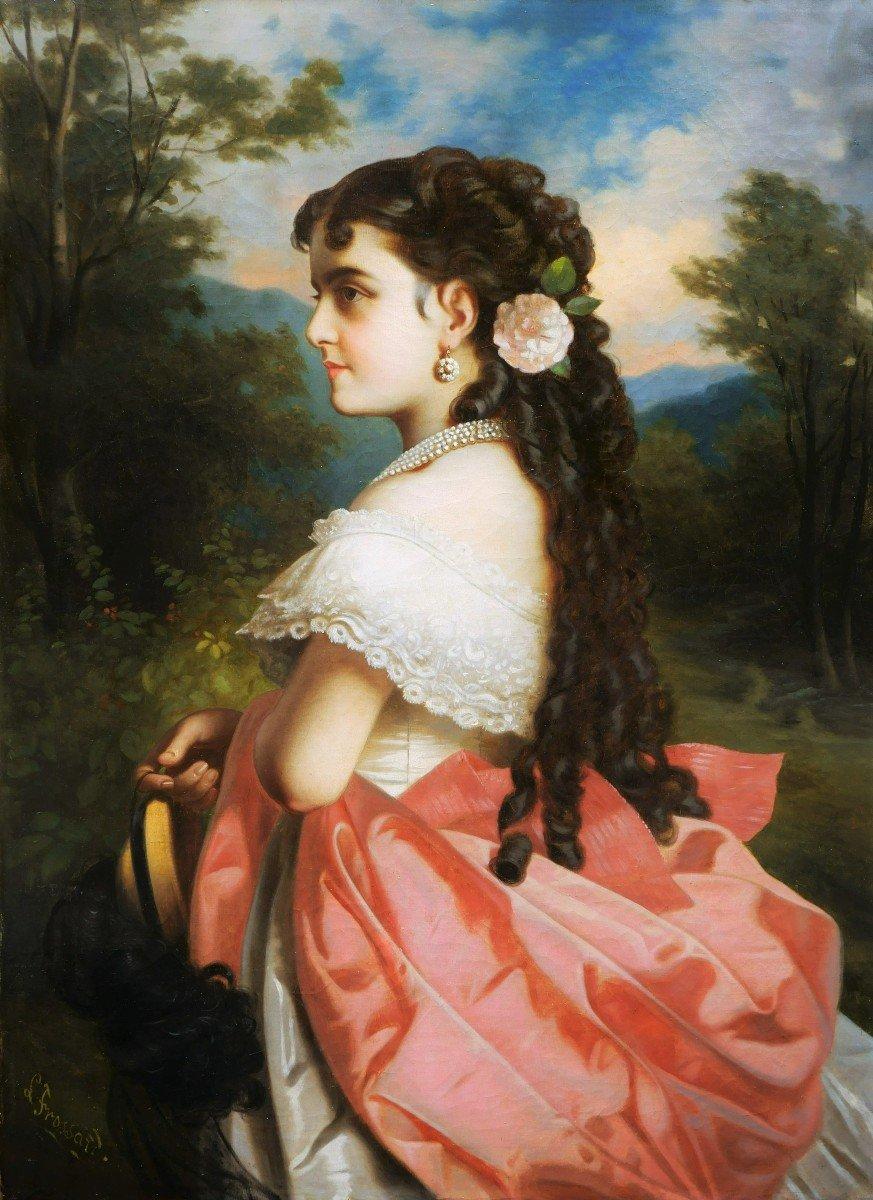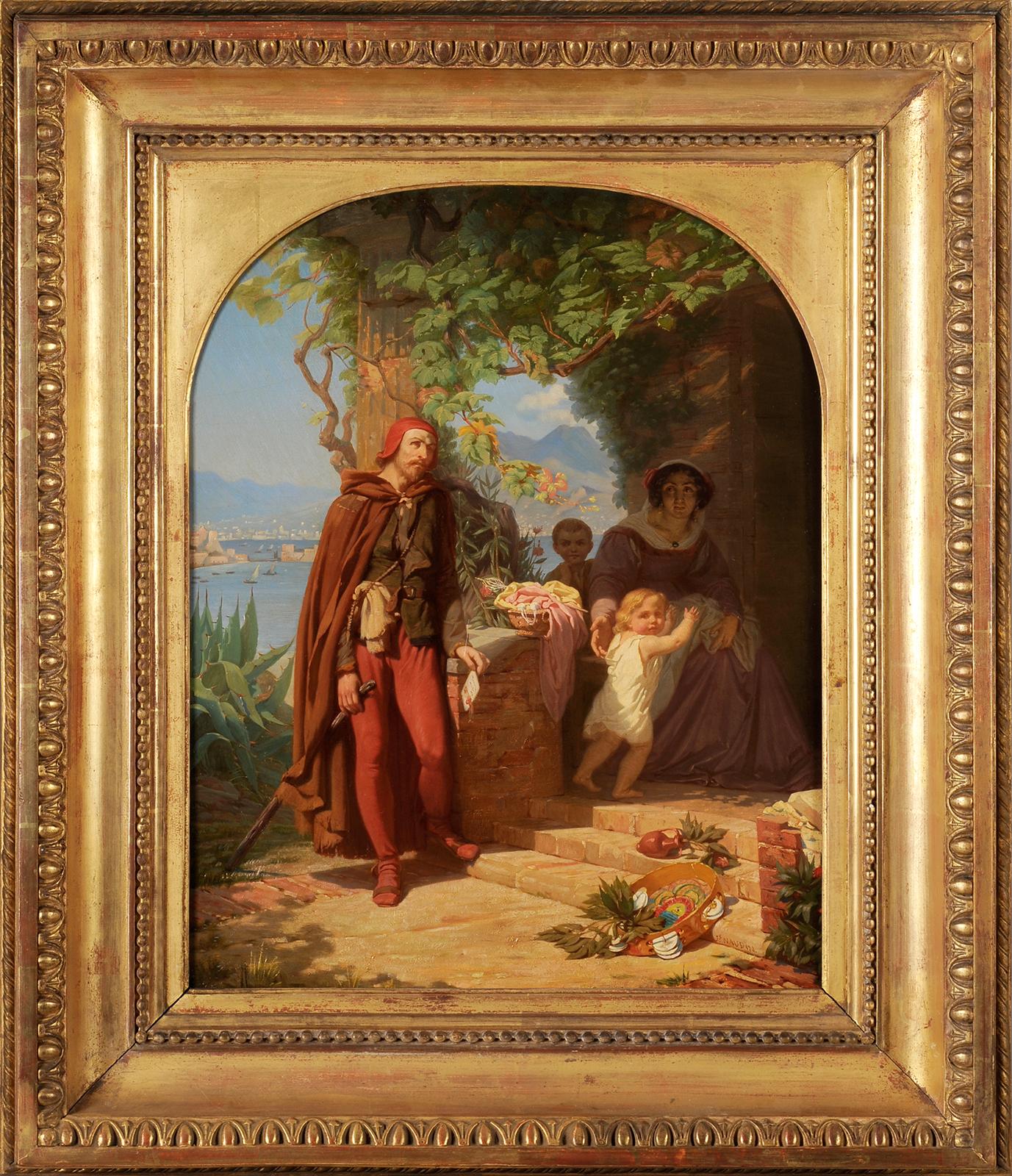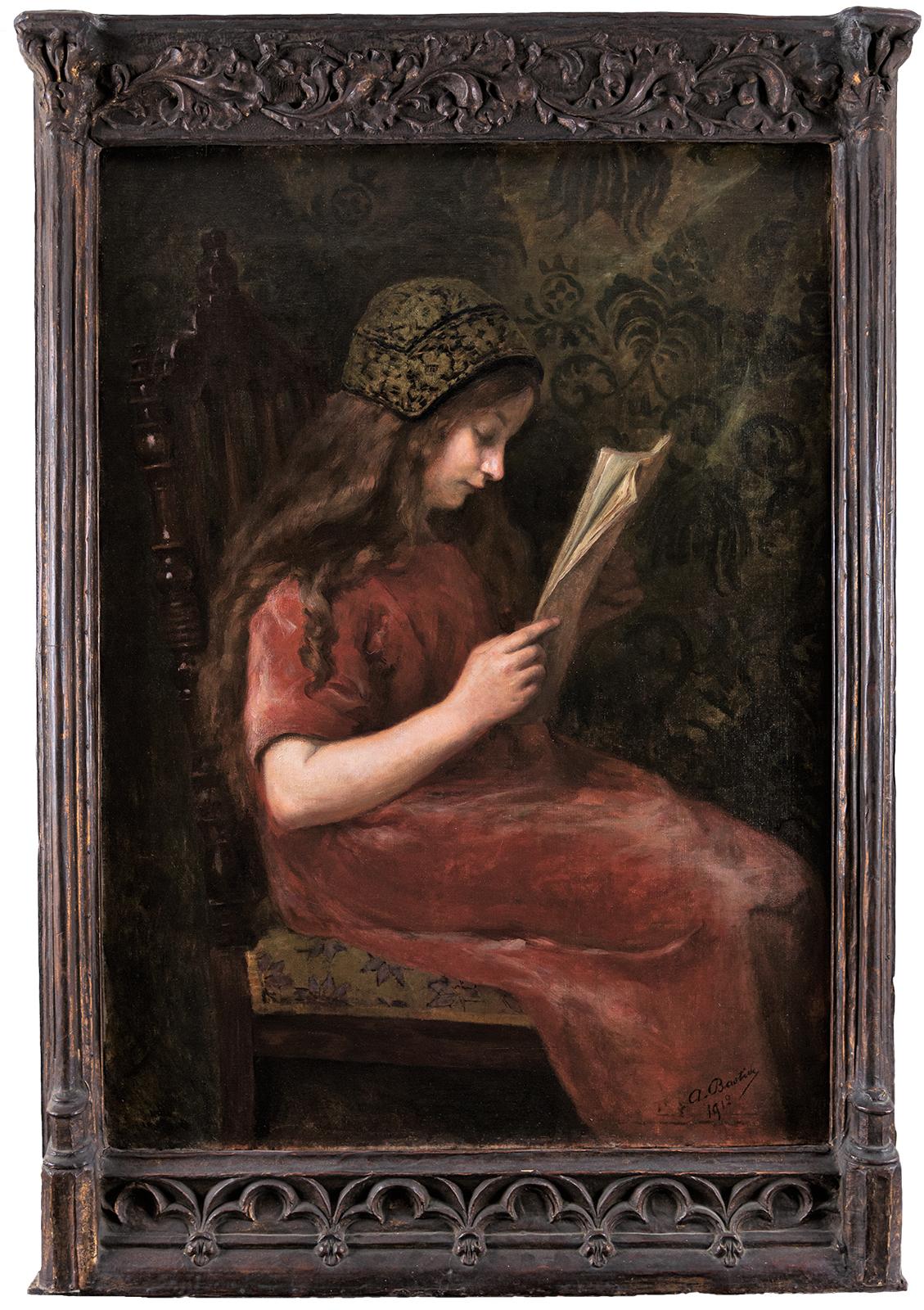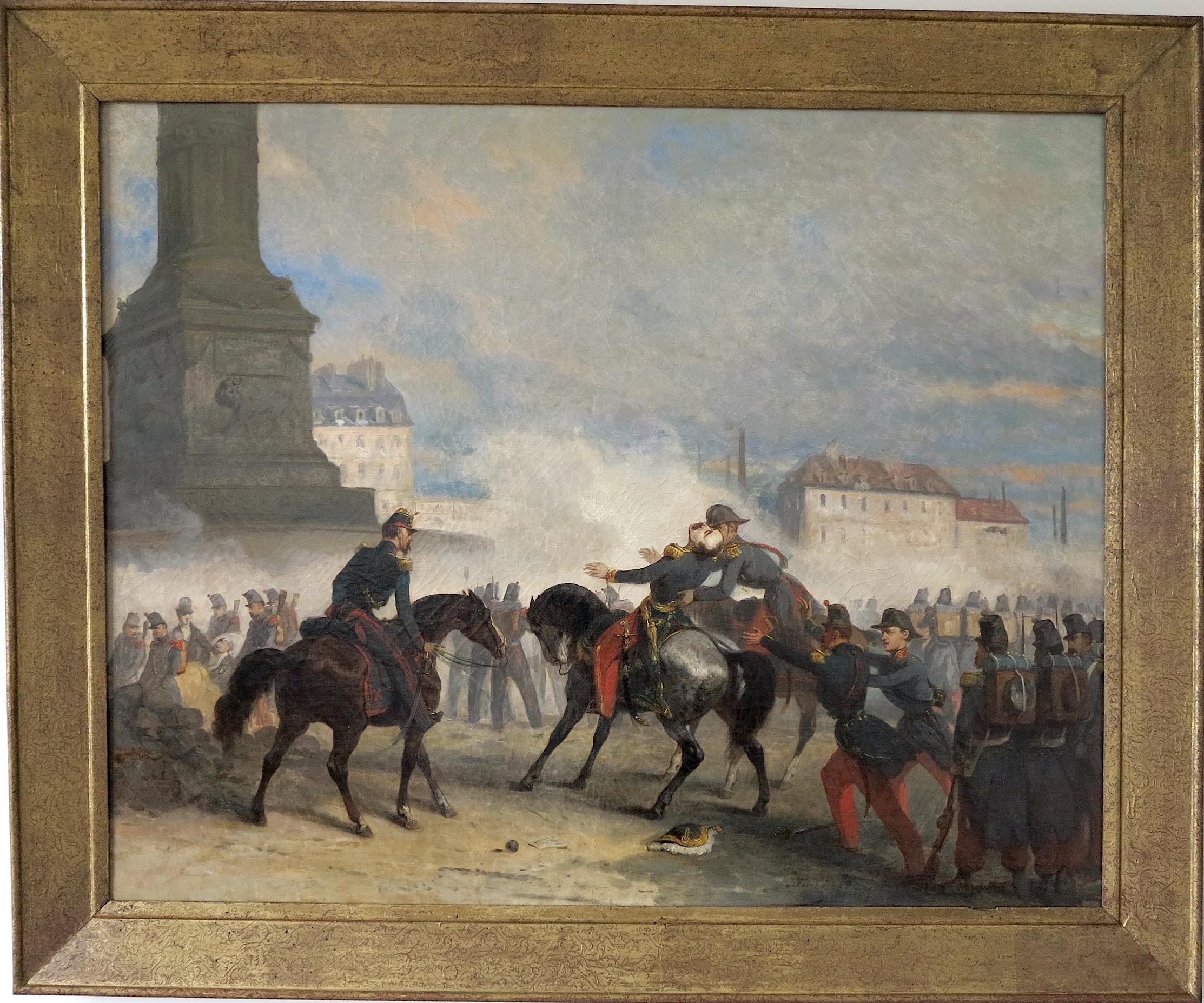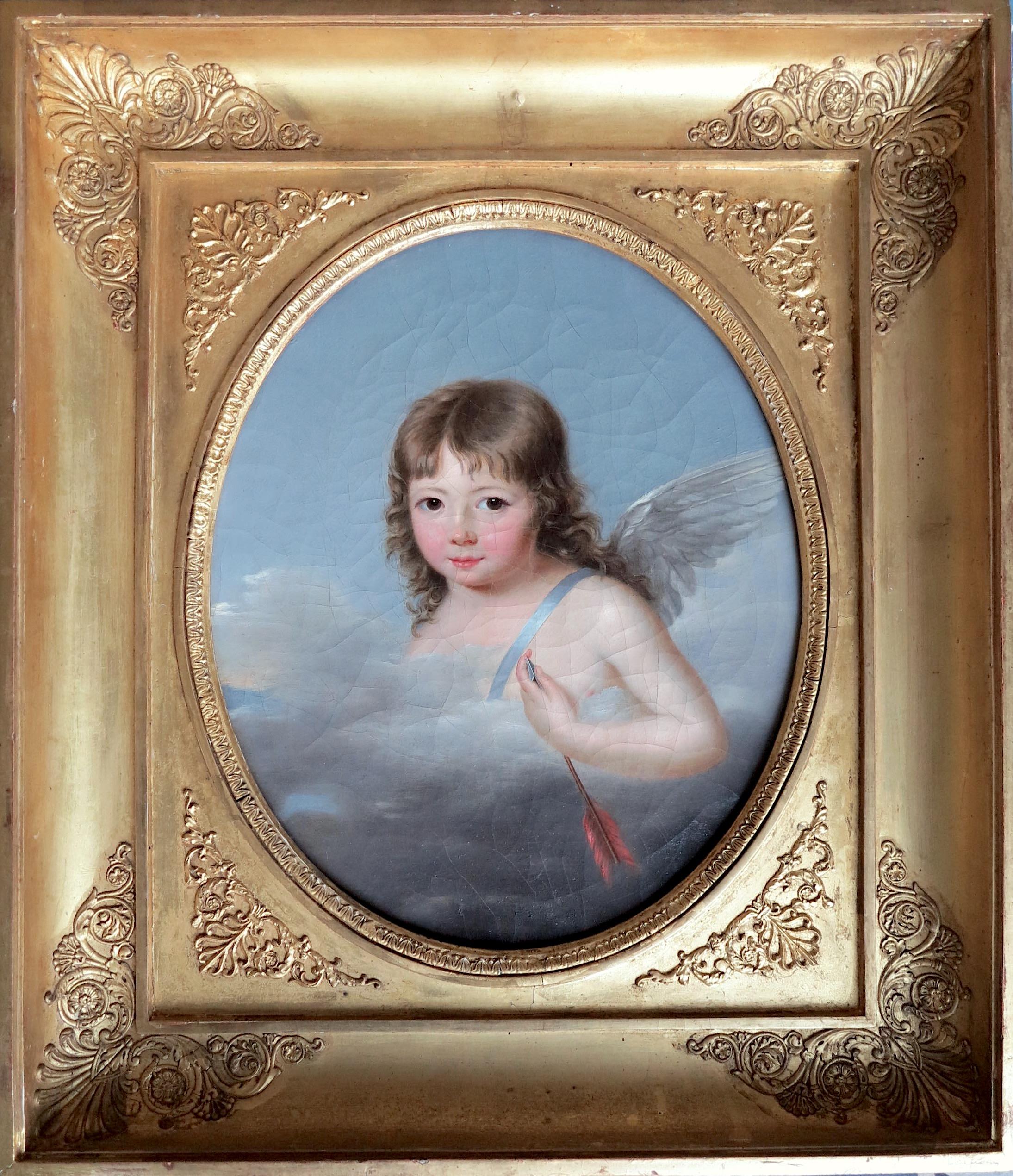Items Similar to The Annunciation
Want more images or videos?
Request additional images or videos from the seller
1 of 7
Jacques StellaThe Annunciation1630/35
1630/35
About the Item
Jacques STELLA
(Lyon, 1596 - Paris, 1657)
The Annunciation
Oil on alabaster (single old break perfectly restored)
H. 25 cm; W. 30 cm
Son of François Stellaert, a painter of Flemish origin who moved to Rome in 1576 and then to Lyon, Jacques Stella was born in Lyon in 1596. Around 1619, he left for Florence, where he worked for Cosimo II de' Medici. Here, he probably already met Nicolas Poussin and Jacques Callot. Stella left Florence for Rome in 1622 or 1623, where he befriended Poussin, who had arrived in 1624. Stella became famous in the world of Italian art lovers for his small paintings on precious supports: marble, agate, lapis, slate, as well as for his engravings and drawings. In 1634, having received offers from the King of Spain, he left Rome in the retinue of the French ambassador Marshal de Créqui. He passed through Venice, stopping in Lyon in 1635, then Paris. Retained by Richelieu, who took him into his service, he settled in the capital of the kingdom. Showered with favors, he enjoyed lodgings in the Louvre and a considerable pension. He was later awarded the collar of the Order of Saint-Michel, a rare honor for an artist.
Long neglected by art historians, Stella is nevertheless one of the great painters of 17th-century France. His art is powerful and sober, and his solidly balanced compositions are populated by sculptural, spare figures that attest to his knowledge of Antiquity. The smooth, porcelain-like finish of his later works, and the colors melted into a cold, abstract light, made Stella one of the most important representatives of Parisian Atticism in the 1640s, and a model of neo-classicism.
Undoubtedly created after his return to France, this very fine alabaster plaque, with its natural "cloudy" movements, allows Stella to levitate the archangel herald. This founding episode in the life of Christ is recounted in the New Testament, the central mystery of Christian worship in which the divine becomes incarnate in man. The angel Gabriel announces to Mary that she will bear a child in her womb while remaining a virgin. She becomes the mother of the Son of God.
This subject has been depicted by some of the world's greatest artists, so important is it to the Christian faith. Almost always on the same axis, the archangel comes from the left and from the clouds, and is therefore higher than Mary, who is often depicted on her knees in prayer, earthbound and human.
Here, Stella adds a further detail that is found in some of the iconography of the annunciations, namely the lily in bloom and its stem carried by the angel Gabriel. A symbol of purity, and therefore virginity.
Stella painted this important subject several times. In 1631, while still in Italy, he produced a very fine version on lapis lazuli, which gives us an idea of what he would produce at the stylistic turning point of his career, the return from Rome to France. A small work on slate takes up the characteristic elements of our Virgin. The colors, the drapery, the position of the hands, just like the angel where many similarities can be found. Sylvain Kerspern, an expert on the artist, dates our work to the same period and will include it in his catalog.
- Creator:Jacques Stella (1596 - 1657, French)
- Creation Year:1630/35
- Dimensions:Height: 9.85 in (25 cm)Width: 11.82 in (30 cm)
- Medium:Oil,Alabaster
- Movement & Style:
- Period:1620-1629
- Condition:Perfect condition. Cleaned.
- Gallery Location:BELEYMAS, FR
- Reference Number:1stDibs: LU1860214292972
About the Seller
No Reviews Yet
Vetted Seller
These experienced sellers undergo a comprehensive evaluation by our team of in-house experts.
Established in 2011
1stDibs seller since 2022
- ShippingRetrieving quote...Ships From: BELEYMAS, France
- Return PolicyThis item cannot be returned.
More From This SellerView All
- Judith and HoloferneLocated in BELEYMAS, FRJacques STELLA (Lyon, 1596 – Paris, 1657) Judith and Holofernes Oil on slate H. 23.5 cm; L. 24 cm Son of François Stellaert, a painter of Flemish origin who settled in Rome in 1576, then in Lyon, Jacques Stella was born in this city in 1596. Around 1619, he left for Florence where he worked for Cosimo II de Medici. He probably already met Nicolas Poussin and Jacques Callot there. Stella left Florence for Rome in 1622 or 1623, where he befriended Poussin, who arrived in 1624. Stella became famous in the world of Italian amateurs for his small paintings painted on precious supports: marble, agate, lapis, slate, as well as by his engravings and drawings. In 1634, having received offers from the King of Spain, he left Rome in the suite of Marshal de Créqui, French ambassador. He passed through Venice, stopped in Lyon in 1635, then in Paris. Retained by Richelieu who took him into his service, he settled in the capital of the kingdom. Covered with favors, he benefited from accommodation in the Louvre and a considerable pension. He later received the Collar of the Order of Saint-Michel, a rare honor for an artist...Category
1620s French School Figurative Paintings
MaterialsSlate
- Portrait of singer Adelina Patti - L. Frossard - OperaLocated in BELEYMAS, FRL. FROSSARD (active in Vienna around 1870) Portrait of Adelina Patti (1843-1919) Oil on canvas H. 100.5 cm; L. 73.5 c Signed lower left If the artist maintains a certain discretion ...Category
1860s French School Figurative Paintings
MaterialsCanvas, Oil
- Jules Naudin (1817-c.1876) - Tasso arriving at his sister's house in SorrentoBy Attilio ManganaroLocated in BELEYMAS, FRJules Ambroise Francois NAUDIN (Paris 1817 – c.1876) Tasso arriving at his sister's house in Sorrento Oil on canvas H. 49 cm; L. 37.5 cm Signed lower right Exhibition: 1852, Paris Salon, under number 959 Related work: Engraving by Jean-Denis Nargeot in 1852 Bibliography: L’Illustration, April 24, 1852, engraved by Best, Hottelin and Regnier, after a drawing by Valentin) and reproduced p.260, cited p.262; La Mode: Political, Religious and Literary Review, 1852, quoted; Journal des Demoiselles...Category
1850s French School Figurative Paintings
MaterialsCanvas, Oil
- Young girl readingLocated in BELEYMAS, FRAlice BASTIDE (Saint Mandé 1868 – Paris 1959) Portrait of a little girl reading Oil on canvas H. 100 cm; L. 72.5 cm Signed lower right and dated 1912 Daughter of a pastor from Gard and an English woman, Alice Bastide grew up in Paris. A pupil of the Jullian Academy, she began her apprenticeship under the guidance of Henri Royer and François Schommer. The development of his art is mainly oriented towards still lifes, without completely abandoning portraits and landscapes. Her other specialty for which she received numerous awards is miniatures. At the Salon of 1914 she received the Maxime David prize crowning the best piece while her finesse was already noticed by press critics from 1907. Coronation, in 1926 she received a gold medal at the Salon for her miniature Coquetterie. In 1896, the young woman married a man from Gard, Auguste Massebiaux, whose name she would occasionally bear. The latter, a lawyer at the Paris Court of Appeal, died in 1910. The couple had no children. At that time she was domiciled at 48 avenue d'Orléans (later named avenue du general Leclerc) in Paris where she lived until her death in 1959. Until the mid-1930s she continued to exhibit at the Salon des Artistes French with a manner very close to Impressionism, luminous and vigorous. In 1912, two years after the death of her husband, Alice Bastide was certainly still marked by the sadness of her mourning. The tones of our portrait of a little girl and the frame she puts together are dark and heavy. This child, wearing an embroidered bonnet, is bent over her book, her loose hair flowing over a red velvet indoor dress. This intimate portrait on a dark tapestry...Category
1910s French School Figurative Paintings
MaterialsOil, Canvas
- Sketch of a dandy portraitLocated in BELEYMAS, FRFrench school circa 1840 Sketch of a dandy portrait Oil on canvas mounted on cardboard H. 21 cm; L. 20.5 cmCategory
1830s French School Figurative Paintings
MaterialsCanvas, Oil
- Portrait of a young girlLocated in BELEYMAS, FRLouis Joseph César DUCORNET (Lille 1806 – Paris 1856) Portrait of a young girl Oil on canvas H. 92 cm; L. 73 cm Signed upper left, dated 1837 When he came into the world in Lille in...Category
1830s French School Figurative Paintings
MaterialsCanvas, Oil
You May Also Like
- The death of General Négrier on Place de la Bastille, Paris - FranceBy Nicolas Edward GabéLocated in PARIS, FRNicolas Edward GABE (Paris, 1814 - Paris, 1865) The death of General Négrier on Place de la Bastille on June 25, 1848 Oil on canvas Signed and dated lower right 82 x 101 cm 1849 Nicolas Edward Gabé is a 19th century artist who is still little studied to this day and yet seems to have enjoyed, according to the artistic press of the time, a certain notoriety, in particular for his seascapes. The few bibliographical elements that we have come from the Salon booklets and tell us that the artist was born in Paris in 1814, therefore shortly before the end of the Empire. No elements on his artistic training are mentioned in the booklets, we just know that Gabé exhibited at the Paris Salon from 1835 to 1864 where he first practiced miniature then then approached easel painting, risking himself as well in still life that the seascapes, the landscape, the portrait or the hunting. According to press articles, he also took part in various exhibitions in the provinces such as Boulogne-sur-Mer and Marseille. Notably, Gabé did not exhibit at the Salon his large historical canvases on the revolution of 1848, which today are of obvious documentary and iconographic interest; probably for political reasons which are easily understandable to us today in view of the historical events of then. Gabé died in Paris at the age of 51 on January 4, 1865 with a mention in the January 7, 1865 edition of L'Union des Arts: “The death of Mr. Gabé, painter, well known in the export trade in paintings as well as to the auctioneers' hotel, whose sales it supplied through its numerous navies. “ "On June 25, 1848, in front of the barricades erected in the Bastille by the insurgents of the Red Republic, General Négrier fell to death, while he was uttering words of order and conciliation". Here are the opening lines of the tribute paid by Colonel Borgarelli d´Ison, friend of General Négrier. General Négrier belonged to a family from Maine, brought back by Marshal Lannes from emigration. Born in Le Mans on April 27, 1788, François Marie Casimir de Négrier entered, barely 18, as a volunteer in the 2nd Light Infantry Regiment. He began in 1806 with the campaigns of Prussia and Poland, during which he earned, through his bravery, the rank of sergeant and the decoration of the Legion of Honor. He made the following campaigns in Spain and Portugal, and left, with his regiment, only for the campaign of France, in 1814, after having risen successively, by actions of brilliance and by a serious wound, to the ranks of head of battalion and officer of the Legion of Honor, with which he was provided from October 1813. The Restoration retained his rank in his regiment. After having fought and wounded a second time seriously in Waterloo, Négrier was recalled in 1816 under the second Restoration. He was appointed, in 1825, lieutenant-colonel, then colonel in 1830, brigadier general in 1836, and of division in 1841. From March 1837 he participated in the conquest of Algeria. The Revolution of 1848 found Negrier in possession of the important command of the 16th Military Division in Lille. Quaestor of the Assembly in these times which promised to be troubled, Négrier reviewed the Place de la Concorde on June 23 at around noon various mobile guard battalions. He then took the head of 2,000 men provided by the 10th and 11th legions of the national guard and bivouacked on the Place du Palais until the next day 24. On Sunday 25 at nine o'clock, the Négrier division resumed the fight towards the Saint suburb. -Antoine. The troop gains continual advantages. At around two o'clock the column of Négrier had seized the Pont Marie: it had removed the barricades from the Quai Saint-Paul, the rue de l'Etoile, the rue des Barres...Category
Mid-19th Century French School Figurative Paintings
MaterialsOil
- CupidBy François Pascal Simon GérardLocated in PARIS, FRFrench School of the early 19th century Circle of Baron GERARD (1770-1835) or Circle of Élisabeth Louise VIGÉE-LEBRUN (Paris, 1755 – Paris, 1842) Cupid ...Category
Early 19th Century French School Portrait Paintings
MaterialsOil
- Study of a Breton shepherdessBy Theodore ValerioLocated in PARIS, FRThéodore VALERIO (Herserange, 1819 – Vichy, 1879) Study of a Breton shepherdess Oil on canvas mounted on cardboard Bears the sale stamp at the bottom 31 x 22 cm Provenance: Sale o...Category
Late 19th Century French School Figurative Paintings
MaterialsOil
- Full length portrait of a child with his dogLocated in PARIS, FRBenjamin Théophile CHARON-LÉMERILLON (Paris, 1807 – Bouzareah (Algiers), 1873) Full length portrait of a child with his dog Oil on canvas Signed and dated lower right 36 x 28 cm 18...Category
Mid-19th Century French School Portrait Paintings
MaterialsOil
- The pupilBy Roland OudotLocated in Genève, GEWork on canvas Golden wooden frame 82 x 65.5 x 3.5 cmCategory
1930s French School Figurative Paintings
MaterialsOil
- Young ladyLocated in Genève, GEWork on wood Brown wooden frame 53 x 48 x 5.5 cmCategory
1950s French School Portrait Paintings
MaterialsOil
